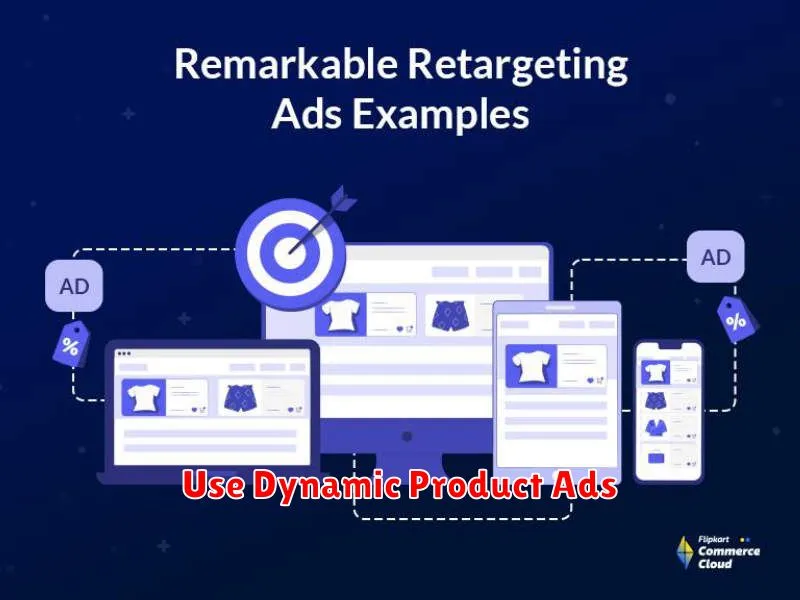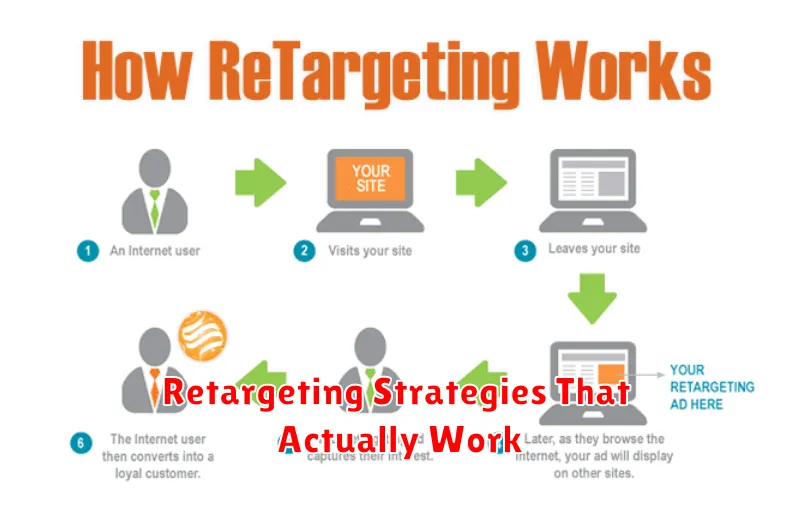Are you tired of seeing your marketing budget disappear without tangible results? Do you wish you could recapture the attention of potential customers who have shown interest in your products or services but haven’t converted? Retargeting is a powerful strategy that can help you achieve precisely that. By strategically re-engaging these warm leads, you can significantly improve your conversion rates and maximize your return on investment. This article will explore proven retargeting strategies that actually work, providing actionable insights to help you create highly effective campaigns.
Effective retargeting requires a well-defined approach, moving beyond simply displaying the same ads repeatedly. This article delves into advanced techniques, from segmenting your audience for personalized retargeting ads to leveraging dynamic retargeting to showcase tailored product recommendations. We’ll uncover the secrets to crafting compelling retargeting campaigns that re-engage your audience, drive conversions, and ultimately boost your bottom line. Discover how to make retargeting a crucial component of your overall marketing strategy and start seeing real results.
What Is Retargeting?
Retargeting, also known as remarketing, is a powerful digital advertising technique that allows marketers to reconnect with users who have previously interacted with their website, app, or other online platform. It works by tracking these users through cookies or other tracking technologies and then displaying targeted ads to them as they browse other websites or use social media.
Essentially, retargeting serves as a reminder to potential customers who have shown initial interest but haven’t completed a desired action, such as making a purchase or filling out a form. This targeted approach helps businesses re-engage users, ultimately driving conversions and maximizing their return on ad spend.
Segment Visitors by Behavior
Effective retargeting relies heavily on understanding visitor behavior. Segmenting your audience allows you to tailor your messaging for improved conversion rates. By grouping visitors based on their actions on your website, you can deliver highly relevant ads.
Consider these segmentation strategies:
- Cart Abandonment: Target visitors who added items to their cart but didn’t complete the purchase. Remind them of their chosen items and offer incentives like free shipping or discounts.
- Product Viewers: Showcase ads featuring products they viewed or similar items they might be interested in. Highlight key features and benefits to encourage a purchase.
- Engaged Visitors: Reward frequent visitors or those who spend considerable time on your site with exclusive offers or loyalty programs.
This behavioral segmentation allows for a more personalized experience, increasing the likelihood of converting visitors into paying customers.
Use Dynamic Product Ads

Dynamic Product Ads (DPAs) are a powerful retargeting tool, especially for e-commerce businesses. They allow you to automatically show ads featuring products that users have previously viewed or interacted with on your website. This personalized approach significantly increases the chances of a conversion.
DPAs leverage your product catalog feed to generate ads in real-time. This ensures that pricing and availability are always accurate. The ads are also highly relevant to the individual user, reminding them of products they’ve already expressed interest in and potentially leading them back to complete a purchase.
By utilizing DPAs effectively, you can recapture abandoned carts, promote cross-sells, and upsell products to existing customers. This personalized retargeting method helps maximize ROI and drives significant revenue growth.
Set Frequency Caps
Frequency capping is a crucial element of successful retargeting. Seeing the same ad too many times can annoy potential customers, leading to ad fatigue and a negative brand perception. Conversely, too few impressions might not be enough to effectively re-engage them.
Finding the right balance is key. A good starting point is to aim for a frequency of around 2-3 impressions per day, per user. However, this can vary depending on your industry, campaign goals, and the length of your sales cycle. For products with a shorter buying cycle, you might be able to increase the frequency slightly. For longer cycles, a lower frequency is often more effective.
Continuously monitor your campaign performance and adjust your frequency caps accordingly. Look for signs of ad fatigue, such as decreased click-through rates and conversions. If you notice these trends, lower your frequency cap. Regularly testing and refining your frequency caps will help you optimize your campaigns for maximum impact and ROI.
Design Engaging Visuals
Visual appeal is crucial for retargeting campaign success. Users are constantly bombarded with online advertisements, so your visuals need to stand out to capture their attention and reignite their interest in your product or service.
Employ high-quality images and videos that clearly showcase your offerings. Consider using lifestyle imagery to demonstrate how your product fits into a consumer’s life, or product-focused visuals that highlight key features and benefits.
Maintain consistent branding across your visuals, ensuring they align with the aesthetic used on your website and other marketing channels. This reinforces brand recognition and builds trust.
Experiment with different visual formats. Animated GIFs can be eye-catching, while carousel ads allow you to showcase multiple products or features within a single ad unit.
Test Different Timing Intervals
A crucial aspect of retargeting is determining the optimal timing intervals for displaying your ads. Frequency and recency play significant roles in campaign effectiveness. Too soon, and you risk annoying potential customers; too late, and they may have moved on.
Experiment with different timing strategies to find what resonates best with your audience. Consider testing shorter intervals (e.g., 1-7 days) for users who have recently abandoned their carts, as they likely still have high purchase intent. Longer intervals (e.g., 30-60 days) can be effective for re-engaging users who have interacted with your brand in the past but haven’t made a recent purchase.
A/B testing is vital here. Create separate retargeting campaigns with varying timing intervals and track their performance metrics. Analyze click-through rates, conversion rates, and return on ad spend to identify the most effective timing strategy for your specific products or services.
Track Conversions and ROI
Tracking conversions and ROI is crucial for evaluating the effectiveness of your retargeting campaigns. Without proper tracking, you won’t know which strategies are generating revenue and which are wasting your budget.
Utilize analytics platforms like Google Analytics or your ad platform’s built-in tracking tools. Set up conversion goals that align with your business objectives, such as purchases, sign-ups, or form submissions. Monitor these goals closely to understand how your retargeting efforts contribute to them.
Calculate your ROI by comparing the revenue generated from your retargeting campaigns to the cost of running those campaigns. This will give you a clear picture of your profitability and allow you to optimize your strategies for maximum return.
Regularly analyze your conversion data and ROI to identify areas for improvement. Experiment with different targeting parameters, ad creatives, and bidding strategies to see what yields the best results.

